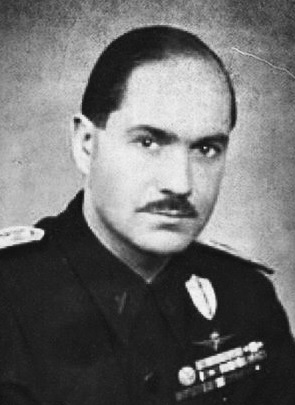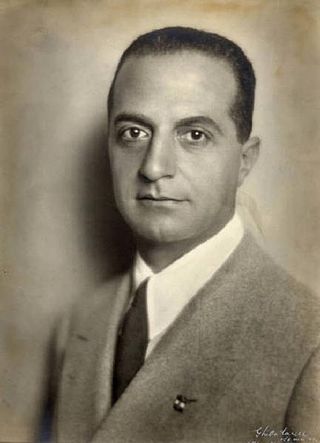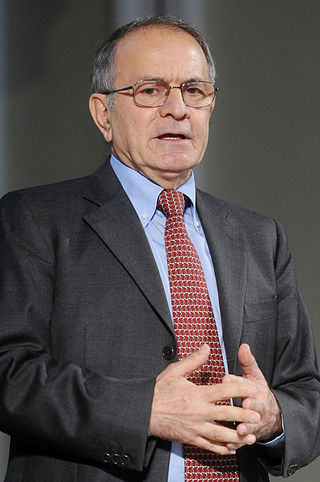
EUR is a residential and business district in Rome, Italy, part of the Municipio IX.

Alessandro Pavolini was an Italian politician, journalist, and essayist. He was notable for his involvement in the Italian fascism government, during World War II, and also for his cruelty against the opponents of fascism.
Sergio Panunzio was an Italian theoretician of national syndicalism. In the 1920s, he became a major theoretician of Italian Fascism.

Giuseppe Bottai was an Italian journalist, and member of the National Fascist Party of Benito Mussolini.

Opera Nazionale Balilla (ONB) was an Italian Fascist youth organization functioning between 1926 and 1937, when it was absorbed into the Gioventù Italiana del Littorio (GIL), a youth section of the National Fascist Party.

Fascist architecture encompasses various stylistic trends in architecture developed by architects of fascist states, primarily in the early 20th century. Fascist architectural styles gained popularity in the late 1920s with the rise of modernism along with the ultranationalism associated with fascist governments in western Europe. Fascist styles often resemble that of ancient Rome, but can extend to modern aesthetics as well. Fascist-era buildings are frequently constructed with particular concern given to symmetry and simplicity.

Foro Italico is a sports complex in Rome, Italy, on the slopes of Monte Mario. It was built between 1928 and 1938 as the Foro Mussolini under the design of Enrico Del Debbio and, later, Luigi Moretti. Inspired by the Roman forums of the imperial age, its design is lauded as a preeminent example of Italian fascist architecture instituted by Mussolini. The purpose of the prestigious project was to get the Olympic Games of 1940 to be organised by fascist Italy and held in Rome.

Marcello Piacentini was an Italian urban theorist and one of the main proponents of Italian Fascist architecture.

The Palazzo delle Esposizioni is a neoclassical exhibition hall, cultural center and museum on Via Nazionale in Rome, Italy.

The Exhibition of the Fascist Revolution was an art exhibition held in Rome at the Palazzo delle Esposizioni from 1932 to 1934. It was opened by Benito Mussolini on 28 October 1932 and was the longest-lasting exhibition ever mounted by the Fascist regime. Nearly four million people attended the exhibition in its two years. Intended to commemorate the revolutionaries who had taken part in the rise to power of Fascism, the Exhibition was supposed to be, in Mussolini's own words, "an offering of faith which the old comrades hand down to the new ones so that, enlightened by our martyrs and heroes, they may continue the heavy task."

The Academia della Farnesina, also known as the Accademia fascista maschile di educazione fisica or Accademia fascista della Farnesina, was a centre for sport and political education in Fascist Italy.

Emilio Gentile is an Italian historian and professor, specializing in the history, ideology, and culture of Italian fascism. Gentile is considered one of Italy's foremost cultural historians of Fascist Italy and its ideology. He studied under the renowned Italian historian Renzo De Felice and wrote a book about him.
This is a list of words, terms, concepts, and slogans in the Italian language and Latin language which were specifically used in Fascist Italian monarchy and Italian Social Republic.

Ines Donati was a political activist and a supporter of the first wave of Italy's Fascist movement.
The Sandro Italico Mussolini School of Fascist Mysticism was established in Milan, Italy in 1930 by Niccolò Giani. Its primary goal was to train the future leaders of Italy's National Fascist Party. The school curriculum promoted Fascist mysticism based on the philosophy of Fideism, the belief that faith and reason were incompatible; Fascist mythology was to be accepted as a "metareality". In 1932, Mussolini described Fascism as "a religious concept of life", saying that Fascists formed a "spiritual community".
Fascist mysticism was a current of political and religious thought in Fascist Italy, based on Fideism, a belief that faith existed without reason, and that Fascism should be based on a mythology and spiritual mysticism. A School of Fascist Mysticism was founded in Milan on April 10, 1930, and active until 1943, and its main objective was the training of future Fascist leaders, indoctrinated in the study of various Fascist intellectuals who tried to abandon the purely political to create a spiritual understanding of Fascism. Fascist mysticism in Italy developed through the work of Niccolò Giani with the decisive support of Arnaldo Mussolini.

Antonio Bernocchi was an Italian industrialist, who built up a successful textile factory at Legnano, in Lombardy.

Alziro Bergonzo was an Italian architect and painter. His primary style was the rationalized Stile Littorio.

Armando Brasini was a prominent Italian architect and urban designer of the early twentieth century and exemplar of Fascist architecture. His work is notable for its eclectic and visionary style inspired by Ancient Roman architecture, Italian Baroque architecture and Giovanni Battista Piranesi.

Araldo di Crollalanza (1892–1986) was an Italian journalist and politician who held significant posts in Fascist Italy. He was the minister of public works between 1930 and 1935 and a long-term member of the Italian Senate.
















